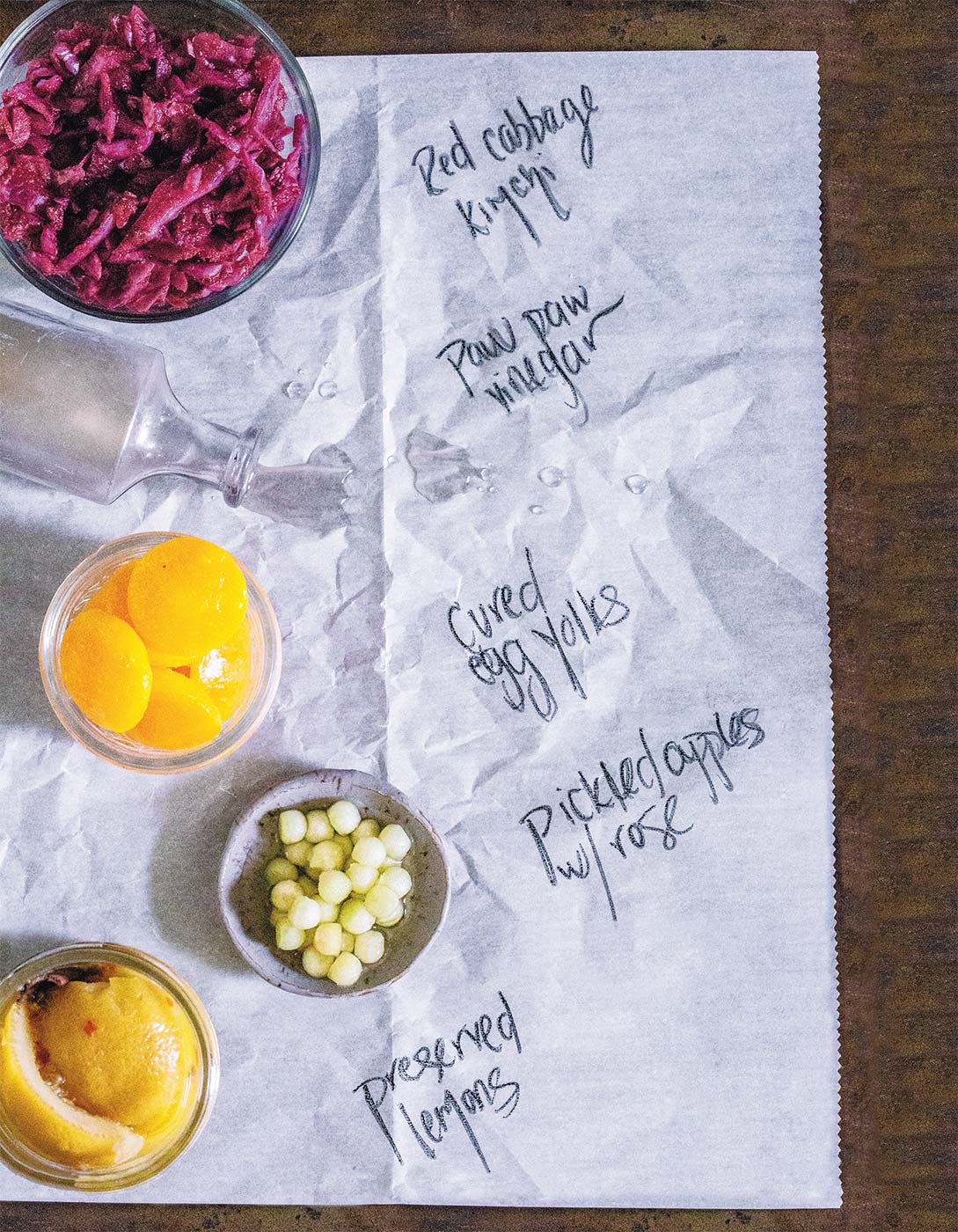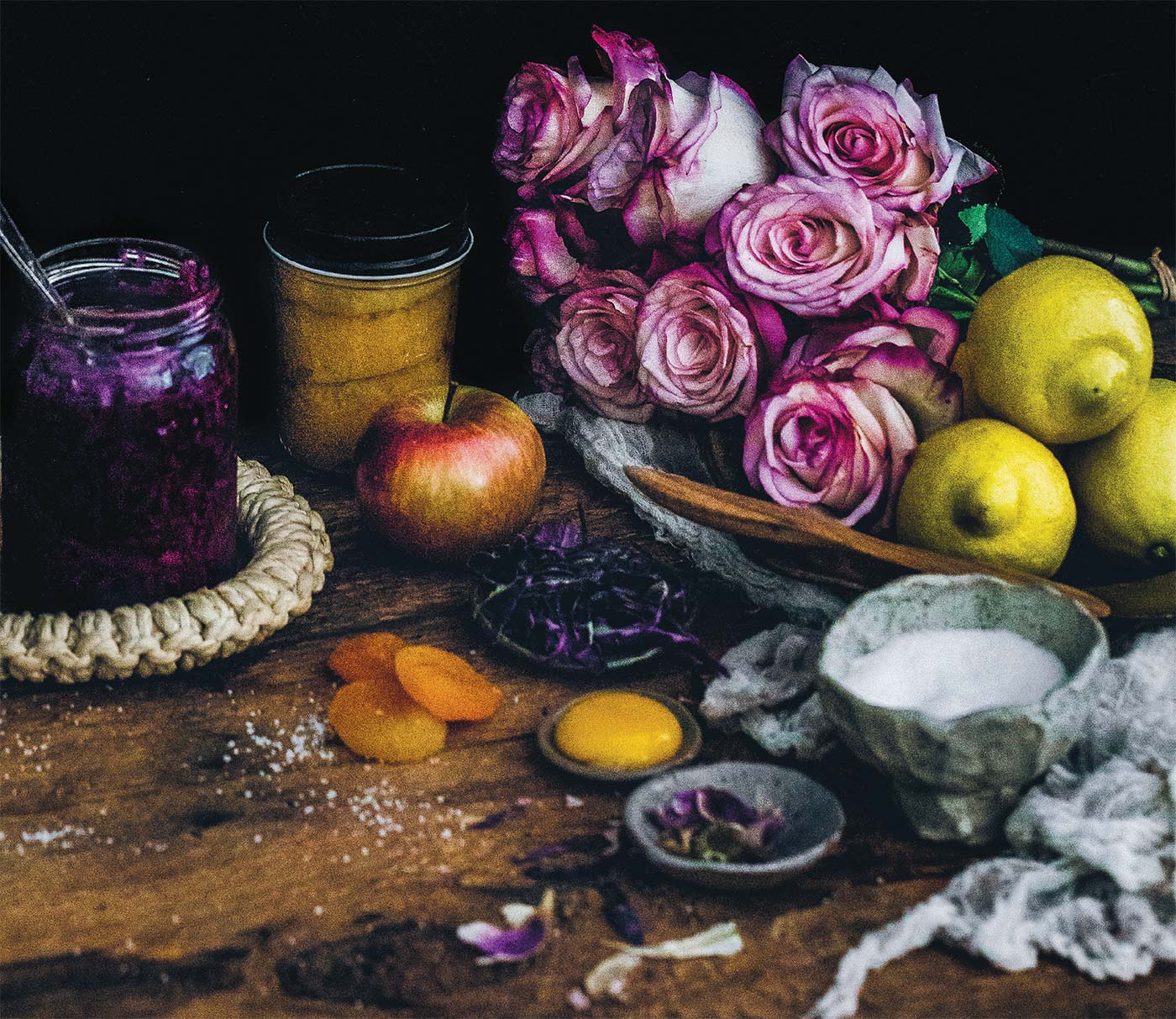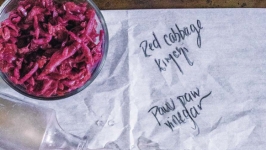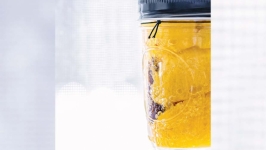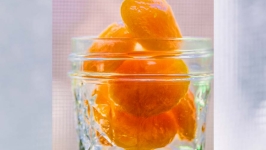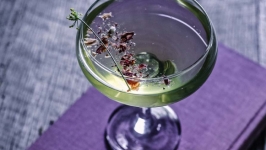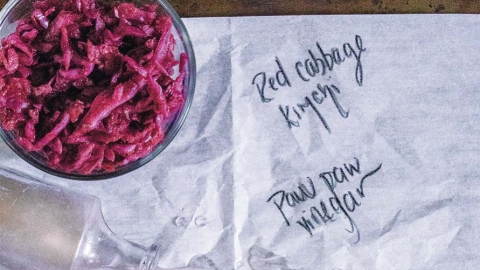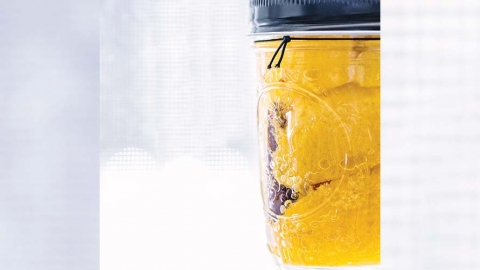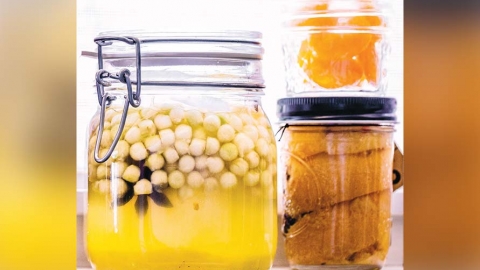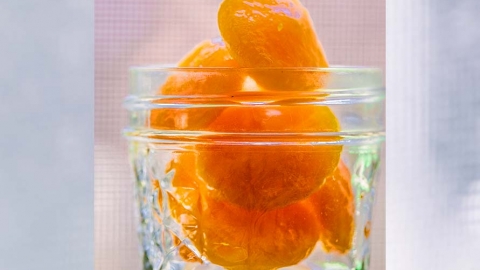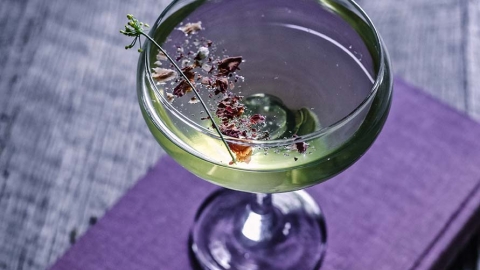SELF PRESERVATION
With a little effort and a little more time, the flavors of summer and autumn can last through the winter season and beyond. Learn from four Midwestern chefs how to use pickling and fermentation to preserve produce, flavor and the spirit of the season—all the while creating something new.
CRUNCHY AND FUNKY
When Chef Braedon Kellner helped open Tinker Street, he made the restaurant’s first batch of vegan kimchi. Almost five years later, some of the original kimchi still lives on in every new batch. Each new iteration begins with a purée from the previous batch, which helps compound the flavors over time.
“It’s like giving it a probiotic shot,” Chef Braedon says.
As a traditional Korean side dish, most kimchi includes fish products. This vegan kimchi instead packs in plenty of flavor with ingredients like gochujang paste, cilantro, jalapeño and radish. But it’s the fermentation process that melds and transforms the taste.
Chef Braedon’s kimchi has a crispy-crunch texture and feels like carbonation tingling on the tongue. A little bit of funky heat comes through, yet it finishes a bit sweet and beckons for another bite.
With plenty of ways to use it on the menu, the chefs at Tinker Street create a new round of kimchi about every three months. Chef de Cuisine Tyler Shortt shared that they’ve puréed it as a side for soft-shell crab, whipped it into butter to top Korean fried chicken and waffles and served it with pork belly.
More than a side dish, kimchi can act as a flavoring and a condiment.
“I like to say this kimchi has more culture than some people,” Chef Braedon says.
Yet the chefs incorporate even more pickles and preserves throughout the menu, many of them made in-house. Local paw paw vinegar often mixes in mignonette sauce while cured egg yolks add dimension to salads.
“Of all the menu components, about 73% of them involve some sort of preservation,” Chef Braedon says.
PUNCHY AND BRIGHT
Complex flavors can come from even fewer ingredients thanks to the magic of fermentation. Take Moroccan preserved lemons, for example. Jessica Sowls, owner of Home Ec. Preserves, explains that the main ingredients for this fermented product are lemons, salt and time.
As the lemons preserve for at least a month, the natural acids in the fruit dissolve the added salt to create a brine. The salt and acid then preserve the lemons, creating this traditional North African fermented product with a condensed flavor.
“The process gives the lemons an umami flavor that complements the punchy, bright citrus,” Sowls says.
The chopped peel adds a salty flavor when sprinkled on dishes.
Think: an innovative addition to pasta salad, hummus, stews and grains. Jessica loves to blend one section of peel into homemade vinaigrette with olive oil, shallot, honey and herbes de Provence.
The preserved lemons can last for years if stored properly—she’s had a jar in her fridge for about four years. But the product does change slightly as it sits.
“The bacteria eat more and more of the sugars and convert them to lactic acid, which makes a product punchier over time. The bacteria also increase over time,” she says. “That’s why a lot of fermented foods are refrigerated, because it slows that process down. It stops it at a point where it tastes good and the texture is good.”
TANGY AND TART
Autumn’s best orchard-picked apples can take on new flavors with pickling.
Laura Lachowecki, executive pastry chef at The Gallery Pastry Shop, set out to prove that pickled products can complement sweet dishes, too. Her dessert with pickled apples earned her a spot to compete for the United States at The Pastry Queen World Championship, where she finished second out of 12 countries.
The pickled apples benefit from a hot pickling process, during which the pickling liquid heats on the stove and then covers the apples. The warm, spiced liquid cooks the apple a bit, so it loses its raw crunch while maintaining a firm texture.
“The longer it sits, the softer it gets. The liquid slowly begins to break down the apple, so you don’t want it to go too long. Usually, a two- to three-day shelf life is the best for this product,” Chef Laura says.
Granny Smith apples lend a natural tartness to the recipe, but Honeycrisp apples also work well. When pickled with rice vinegar and balanced with ginger, sugar and star anise, the apples taste juicy and tart enough for a mouthwatering pucker.
The pickled apples pair well with a dish like cream cheese mousse with apple gelée or pecan cake, but they can also be chopped within salads or garnished atop high-end cocktails. They also add a surprising element to a plate instead of a fresh raspberry or a mint sprig.
“It’s different,” Chef Laura says, “but it complements the plate.”
TINKER STREET
402 E. 16th St.
Indianapolis
TinkerStreetIndy.com
THE GALLERY PASTRY SHOP
1101 E. 54th St., G
Indianapolis
GalleryPastryShop.com
HOME EC. PRESERVES
HomeEcPreserves.com
JUST IN TIME: TIPS FOR FERMENTATION
The ingredient that unites these pickled products is time, which is essential to the process. When done correctly, preserves can pay off for seasons to come.
As a reminder, Chef Braedon says, “If you have any fermented or preserved products, give them time. That’s all you can give them. Don’t rush it.” Chef Tyler adds, “It’s worth the wait.”
Want to try fermentation yourself? Here are some tips from the chefs to help you get started.
SANITIZE
All three chefs emphasized the sheer importance of sterilization. Chef Braedon suggested sterilizing the containers (such as Mason jars) with a bleach solution or by boiling them. Make sure to thoroughly clean additional equipment as well.
STORE
Make sure to store the fermented products properly to increase their shelf life and decrease the chance of bad bacteria. Remember that keeping products in the fridge will help slow down the fermentation process.
START
Choose a recipe, gather the ingredients and give it a try. Jessica Sowls says that you don’t need to buy any expensive equipment or gadgets to do it right—just glass jars.
